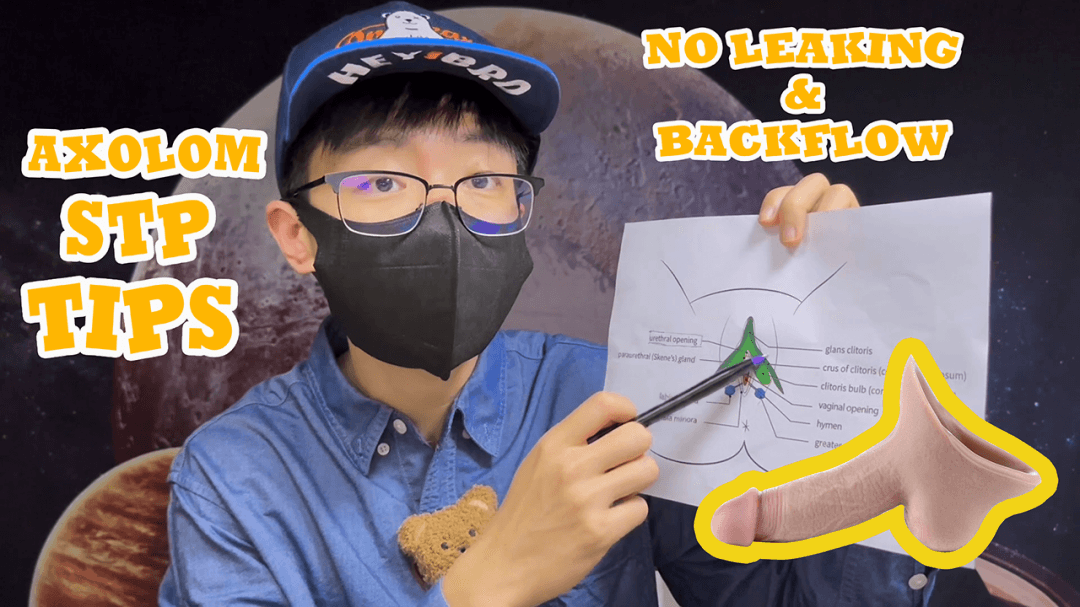Unlocking Beard Growth: A Guide for Transgender Men
For many transgender men, the process of growing facial hair can be an important aspect of their gender-affirming journey. While testosterone hormone therapy (commonly referred to as "T") is a primary method to stimulate facial hair growth in transgender men, there are alternative approaches and strategies available for those who are pre-T or prefer non-hormonal options. In this article, we will explore various techniques and tips to support FTM (female-to-male) individuals in their quest for beard growth.
Understanding FTM Beard Growth:
 FTM beard growth occurs when androgenic hormones, such as testosterone, interact with hair follicles on the face, triggering the growth of coarse and dark facial hair. Testosterone therapy typically facilitates this process by increasing the levels of androgens in the body. However, individuals who are pre-T or choose not to undergo hormone therapy can still explore other methods to stimulate facial hair growth.
FTM beard growth occurs when androgenic hormones, such as testosterone, interact with hair follicles on the face, triggering the growth of coarse and dark facial hair. Testosterone therapy typically facilitates this process by increasing the levels of androgens in the body. However, individuals who are pre-T or choose not to undergo hormone therapy can still explore other methods to stimulate facial hair growth.
Non-Hormonal Approaches:
-
Maintaining General Health: A healthy body promotes optimal hair growth. Ensure you have a balanced diet, exercise regularly, get enough sleep, and manage stress levels. These factors contribute to overall well-being, which can indirectly support hair growth.
-
Microneedling: Microneedling involves using a dermaroller or dermastamp to create tiny punctures on the skin's surface. This technique stimulates blood circulation and encourages hair follicle activity, potentially aiding in beard growth. Consult with a dermatologist or aesthetic professional for proper guidance.
-
Minoxidil: Minoxidil is a topical solution commonly used to treat hair loss. Some transgender men have reported success using minoxidil to stimulate facial hair growth. Apply it to the desired areas according to the product instructions, and consult a healthcare professional for advice on usage and potential side effects.
-
Facial Hair Care: Taking care of your existing facial hair is essential for optimal growth. Regularly clean and moisturize your face to maintain a healthy environment for hair follicles. Gently exfoliate to remove dead skin cells, allowing new hair to emerge.
Cosmetic Techniques:
-
Makeup: Skillful application of makeup can create the illusion of facial hair. Experiment with makeup techniques, such as using brow products or eyeshadow to fill in sparse areas and define the beard line. Online tutorials and workshops specific to FTM makeup techniques can be helpful resources.
-
Temporary Facial Hair Products: Temporary solutions, such as beard stencils, adhesive facial hair, or theatrical-grade facial hair makeup, can be used for special occasions or personal exploration. These products offer the appearance of facial hair without any long-term commitment.
Patience and Acceptance:
It's crucial to remember that facial hair growth is a highly individualized process, influenced by genetics, hormonal levels, and personal factors. Results may vary, and it is essential to maintain realistic expectations. Celebrate the progress you make along the way and embrace the unique journey of your own beard growth.
While beard oil can help nourish and condition the facial hair, it's important to note that it doesn't directly promote beard growth. The growth of facial hair in transmen is primarily influenced by hormone therapy, specifically testosterone. However, using beard oil can improve the overall health and appearance of the beard. It helps moisturize the hair follicles and the underlying skin, reducing dryness, itchiness, and promoting a healthier environment for hair growth.
When selecting a beard oil, consider the following factors:
-
Natural Ingredients: Look for beard oils that contain natural ingredients such as argan oil, jojoba oil, coconut oil, almond oil, or grapeseed oil. These oils are known for their moisturizing and conditioning properties.
-
Fragrance: Choose a fragrance that suits your personal preference. Beard oils are available in a variety of scents, ranging from citrus and woody notes to more subtle or unscented options.
-
Skin Sensitivity: If you have sensitive skin, opt for a beard oil that is specifically formulated for sensitive skin or labeled as hypoallergenic.
-
Quality and Reputation: Research different brands and read customer reviews to ensure you're selecting a high-quality beard oil from a reputable company.
Remember that individual results may vary, and beard growth is primarily influenced by hormone therapy. Beard oil can complement your beard care routine by keeping your facial hair healthy and well-conditioned, but it won't stimulate new hair growth on its own.
If you have specific concerns or questions about beard growth, it's advisable to consult with a healthcare professional who specializes in transgender healthcare or a dermatologist who can provide personalized advice based on your individual circumstances.

Minoxidil and beard oil serve different purposes in relation to beard growth in transgender individuals. Here's an overview of their differences and how they can be beneficial:
- Minoxidil: Minoxidil is a topical medication primarily used to treat hair loss, including male pattern baldness. It works by increasing blood flow to the hair follicles and stimulating hair growth. Minoxidil is available over-the-counter in various forms, such as foams or solutions, and it is typically applied directly to the areas where hair growth is desired.
For transgender individuals seeking to promote facial hair growth, minoxidil can be an option, particularly for those who have not undergone hormone therapy or are in the early stages of their transition. It can potentially help stimulate beard growth in individuals who have limited natural facial hair or are pre-testosterone (pre-T). However, it's important to note that results can vary, and not everyone may experience significant or satisfactory results.
- Beardo Oil: Beardo oil, on the other hand, is a grooming product specifically designed for the care and maintenance of facial hair. It typically consists of a blend of carrier oils (e.g., jojoba oil, argan oil) and essential oils, offering moisturizing and conditioning properties to the hair and the underlying skin. Beard oil helps to hydrate the hair follicles, reduce dryness and itchiness, and improve the overall health and appearance of the beard.
While beard oil does not directly promote beard growth, it can contribute to a healthier beard and help manage common issues like dryness, brittleness, and itchiness. It can also help make the beard appear fuller, softer, and more manageable. Beard oil is suitable for all individuals looking to enhance the health and appearance of their facial hair, including transgender men.
In summary, minoxidil is a medication that may be considered by transgender individuals seeking to stimulate facial hair growth, especially if they are not undergoing hormone therapy. Beard oil, on the other hand, is a grooming product that helps maintain and improve the health and appearance of the existing beard. It is beneficial for anyone looking to nourish and condition their facial hair.
It's important to consult with healthcare professionals, such as endocrinologists or dermatologists, who specialize in transgender healthcare to discuss the options available to you and determine the best approach based on your individual circumstances and goals.
Conclusion:
FTM beard growth can be achieved through various approaches, both hormonal and non-hormonal. While testosterone therapy remains the most effective method, individuals who are pre-T or prefer non-hormonal options can explore techniques such as microneedling, minoxidil, and proper facial hair care. Additionally, cosmetic techniques and temporary solutions can help create the appearance of facial hair. Remember that each person's journey is unique, and patience, self-care, and acceptance are essential throughout the process. Embrace the growth you experience and celebrate your own personal transformation.
Note: It is crucial to consult with healthcare professionals, including endocrinologists and dermatologists, for personalized advice and guidance regarding hormone therapy, minoxidil usage, and other medical considerations.





Can’t Thank You enough for this information.!! And i can really use it now!!
Leave a comment